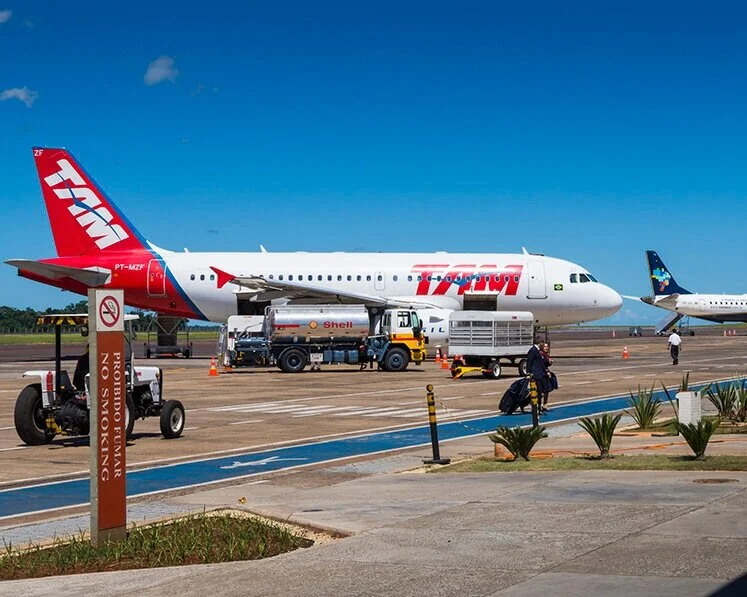At the Nexus of Water Wars is the Axis of Greed
/UNITED STATES – According to a 2019 report by UNICEF and the World Health Organization, some 2.2 billion people around the world do not have access to potable water. Worse, 4.2 billion people do not have carefully managed sanitation services, and 3 billion lack basic hand washing facilities. However, poverty alone does not explain the disproportionate access of the world’s poor to clean water. Water is a plentiful natural resource available from lakes, rivers, and streams. However, in most countries, water management policies and systems are in place that favor national elites while leaving low-income communities without the infrastructure to keep even nearby water sources safe from contamination by human or industrial waste.
Hot Raw Sewage, Bangkok, Photo by Trey Radcliff
The evidence suggests that these problems are growing worse, thanks, in part, to lending policies pushed by international agencies like the World Bank and Inter American Development Bank. These entities allow private companies to turn a nation’s water supplies into a commodity bought and sold on the open market at prices only the rich can afford. However, these policies have also faced popular protest that has forced national governments pursuing neo-liberal policies on water to stand up to foreign agencies or risk being ousted from below.
Bolivia offers a critical case study of today’s increasingly bitter “water wars.” In 2000, and again in 2005, foreign companies like the giant Bechtel Corporation were given control over water rights, which led to an average 35% price increase to consumers for access to clean water. In some areas, the price for water doubled, making it utterly unaffordable for low-income families. Families were even charged for water taken from wells dug on their property, and in some cases, licenses were required for individuals to collect rainwater from their roofs.
Supporters of privatization and commercialization argued that these policies would allow for investments in improved water management systems, eventually benefiting the nation’s poor. But fierce protests from popular organizations forced the national government to declare martial law, and finally, Bechtel withdrew from the country. A similar process unfolded in neighboring Peru, which embraced neo-liberal policies in the early 1990s allowing for extensive corporate involvement in water management. While privatization was halted in 2006, the Peruvian government has created new public water agencies that continue to favor large corporate growers, threatening to overshadow efforts by local communities to ensure equitable access for small farmers and low-income consumers.
The issue of water is a complex one. Over consumption of water in local communities is a real problem requiring expanded education efforts to limit excess waste. At the same time, improved village-level development and distribution of water suppliers can founder without large scale administrative and financial support. For example, in Bolivia, villagers formed a collective that required members to dig wells on behalf of the community as a whole. Clean water was distributed to all residents 17 hours a day, and each household only had to pay $3 per month. But without outside financing, the community was unable to build a water treatment system or to expand production to meet escalating demand from neighboring areas. Despite this successful experiment, the water supply was expected to dry up in the space of a decade.
The fact is, government-supported municipal water agencies may not be up to the task of distributing clean water more equitably. For example, after the Bolivian government ousted Bechtel, the government municipal water service, SMAPA, proved unable to deliver on its promises. The election of Evo Morales in 2005 led to the creation of a new Ministry of Water and a constitutional provision declaring water a human right that included an explicit ban on private appropriation. However, the distribution of water to Bolivia poorest southern districts continues to lag far behind the rest of the country.
Venezuela may be one of the few countries that have managed to overhaul water management to meet the U.N. Millennium Development goals for water and sanitation. In this case, the government’s State Institute for Water Resources promoted the creation of “community water councils” across vast swaths of the countryside. It provided not only government financing and technical support but also grassroots education in water conservation, two of the elements typically missing in any public water management plan. While some observers are skeptical of the government’s numbers, Venezuela claims that 93% of its population currently has access to clean water supply and sanitation at prices they can afford.
It’s worth noting that increased corporate control over water is not just a “Third World” problem. An analysis conducted by the Guardian newspaper found that the combined price of water and sewage had increased by an average of 80% between 2010 and 2018 in 12 U.S. cities. More than 40% of residents in some of those cities live in neighborhoods where the price of water is so high that many they are often in arrears and face service disconnection. One U.S. city, Austin, Texas, reported a 154% increase in the cost of water and sewage over this same period. In New Orleans, Santa Fe, and Cleveland, about three-quarters of low-income families live in neighborhoods where average water and sewage bills are unaffordable.
“More people are in trouble, and the poorest of the poor are in big trouble,” said Roger Colton, a leading utility analyst. He was commissioned by the Guardian to study water poverty.
Just as in much of Latin America, a lack of federal support to public water utilities, which provide service to 87% of all U.S. residents, is crippling the ability of local communities to gain equitable water access. In recent years, maintenance, environmental and health threats, climate shocks and rising expenditures have skyrocketed, the Guardian notes. Meanwhile, U.S. corporate interests seeking control over water in Latin America are pursuing the same control agenda at home. Privatizing public utilities, ostensibly to allow for an overhaul of the aging water management infrastructure and an expansion of water access, is a commonly-proposed solution. However, most cities, despite being strapped for funds, aren’t biting, knowing full well that strictly market-based solutions could produce far worse outcomes.
As an alternative, some cities like Philadelphia are allowing their residents to pay what they can for water, similar to their solution for rising energy costs, reasoning that the public health benefits will far outweigh the costs. It is still only a stopgap, however. The Environmental Protection Agency estimates that at least $35 billion will be needed every year for 20 years for American cities to comply with federal safety regulations for water, sewage, and stormwater.
Where will cities get the money? In theory, from a massive bipartisan federal spending program for infrastructure development. Democrats and Republicans say they are committed to working on a bill, but legislative gridlock, complicated by the bitter divisions surrounding the 2020 election, has stalled all progress thus far. Meanwhile, millions of low-income residents continue to buy bottled water, which they can’t afford to wash their hands while depositing their feces and urine in plastic bags in local dumpsters because the water in their toilets still isn’t running. It is a solution to which millions of poor residents in slums from Sao Paolo to La Paz can already relate.
Gaining access to clean water is one of the significant challenges facing the world’s poor. For decades poorly governed water management systems overseen by corrupt and inefficient national governments have favored economic elites while disproportionately leaving low-income sectors exposed to diseases due to contamination by industrial waste. An added problem is that multinationals, corporations, and international agencies like the World Bank favor water privatization schemes, which boost profits for foreign investors. The net result is a local population held hostage to a system that has commoditized water, the one thing without which human beings can live.
Related Articles
Water privatisation: a worldwide failure? (theguardian.com)
Is Privatizing Water the Solution? (allafrica.com)
Revealed: millions of Americans can’t afford water as bills rise 80% in a decade (theguardian.com)
Thirst for Profit: Corporate Control of Water in Latin America (commondreams.org)












